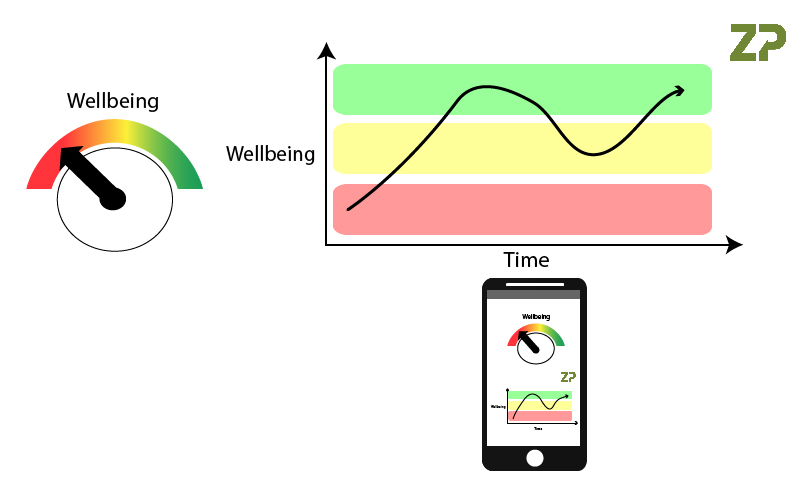INTRODUCTION
In this note we discuss how well-being can be continuously monitored by biochemical parameters through wearable skin patch or perspiration biosensors. This note shows that a person’s ability to stay well, resist stress and diseases and reduce their cancer risks are impart governed by their anti-oxidation level status (AOLS).
NOTE
We are encouraged by the medical and well-being media to have healthy lifestyles, including exercise and eating at a balanced diet, which includes vegetables, fruits and superfoods. Though the claims are persuasive there is no real time data for the user on the impact of these foods and lifestyle choices are having on their short term and long-term health goals. If we dig deeper into foods the health claims are numerous, from improving well-being to preventing diseases, including: protecting against cancers and preventing flu and the common cold The packaging and labelling claims as to why one food is better than another often contain key words and phrases such as ‘anti-oxidant and protect against free radicals’. These claims are not without scientific merit as one of the causes of ill health and disease are free radicals. Our bodies contain free radicals linked with issues with stress, poor diet, environmental pollution etc. The scientific argument as to why some foods are better for us includes the argument that certain foods contain antioxidants and that these molecules can neutralise the free radicals that would otherwise cause us harm. These claims are not without support from the scientific and medical community, with Nobel Prize Winner Linus Pauling advocating grams of vitamin C (ascorbic acid) a day to prevent cancer.
Similarly, the right amount of exercise is said to improve one’s ability to stay healthy and fight diseases, though over exercise is a form of stress and cam reduce the body’s ability to stay healthy. This is because over exercise reduces the body’s ability to neutralise free radicals. Anecdotally professional and elite athletes must take special care of their health as the amount of training they undergo does leave them susceptible to viruses etc.
So it is understood that exercise and balanced diet are a way of biochemically protecting the body from environmental, chemical and biological threats, but what is lacking is a real-time way by which people can truly determine whether the action they are taking is increasing their short-term and long term wellness and healthiness. Scores. Further people concerned with their wellness- do not have a real-time parameter by which they gauge their training levels or foods that are appropriate to their current biochemical condition.
The ways to monitor your overall wellness includes body-mass index , blood pressure, heart-rate etc; there is an issue with all of these which is that they are physiological parameters and are not directly measuring a person’s biochemical status or specifically their ability to resist free-radicals.
Whether one is susceptible to biochemical damage from a source of stress and free radical attack is impart governed by their anti-oxidation level (AOLS). A person’s AOLS is essentially their ability to resist free radical attack. When a person’s AOLS is high, they can better resist the effects of stress sources, but when their AOLS is low their immunity to free radicals is lowered.
At Zimmer and Peacock we are contract developers of wearable sensors for the continuous monitoring of peoples’ well-being, this includes: wearable lactate sensors for athletes, glucose sensors (CGM) for diabetics to anti-oxidant level sensors (AOLS) for sports and well-being. We have a core set of technologies including off-the-shelf biosensors and electronics that our partners use in collaboration with us to develop the products they need for their market.
At ZP we have a number of component technologies for those wishing to develop wearable well-being sensors, including wearable electronics, oxidation sensors. Please if you have any questions don’t hesitate to contact us.

